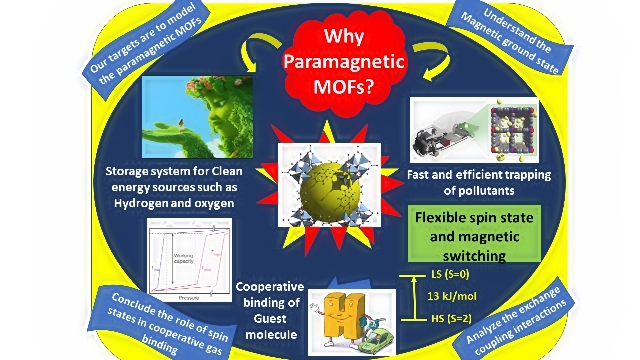Metal Organic Frameworks

Metal Organic Frameworks are porous coordination network which have attracted wide interest in past few decades due to their potential applications in gas storage, sensing, catalysis and drug delivery owing to their high internal surface areas, convenient modular synthesis, and chemical tunability. Though various studies have been undertaken to improve the efficiency of MOFs for gas binding such as modification of aromatic linker part, introduction of various functional groups, light metal decoration and so on, our interest is towards the use of paramagnetic behavior of the open metal centre to understand the role of spin sates in controlling the gas binding to the metal centre. Paramagnetic centres offer additional flexibility to the ground state by their magnetic switchable nature, stabilizing radical interactions and thereby highly influencing the gas binding properties of MOFs. Understanding the energetics of gas binding as well as the role of spin states in controlling the gas adsorption of MOFs through periodic density functional theory-based modelling studies, is something that has not been answered so far in this area. In this context, theoretical insight into the gas adsorptive nature of MOF by tuning the magnetic spin states seeks high impact. Hence our target is towards addressing this hassle on the basis of magnetism as the magnetic exchange coupling interactions and the binding energy calculations can serve as footprint towards the nature of magnetic ground state, which is a problem yet to dissolve and hence opens a new window towards the synthetic route for MOFs.